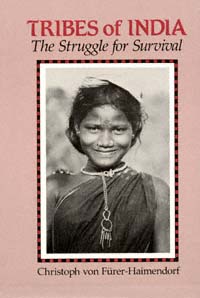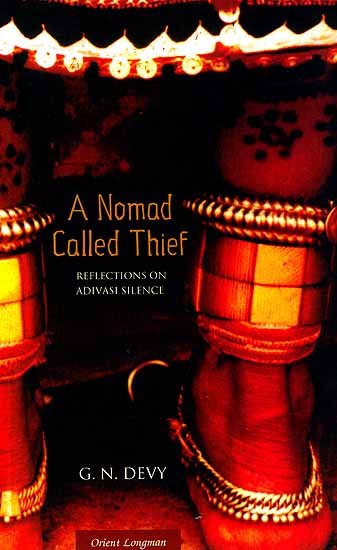Adivasis is the collective name used for the many indigenous peoples of India. The term Adivasi derives from the Hindi word ‘adi’ which means of earliest times or from the beginning and ‘vasi’ meaning inhabitant or resident, and it was coined in the 1930s, largely a consequence of a political movement to forge a sense of identity among the various indigenous peoples of India. Officially Adivasis are termed scheduled tribes, but this is a legal and constitutional term, which differs from state to state and area to area, and therefore excludes some groups who might be considered indigenous.
Adivasis are not a homogeneous group; there are over 200 distinct peoples speaking more than 100 languages, and varying greatly in ethnicity and culture. However, there are similarities in their way of life and generally perceived oppressed position within Indian society. According to the official Census held in 2001, Adivasis constitute 8 per cent of the nation’s total population, over 84 million people. Unofficial figures vary significantly but represent a much higher proportion of India’s population. Adivasis live throughout India but are primarily based in the mountain and hill areas, away from the fertile plains. According to the 2001 census, the greatest concentration is in Chattisgrah (38%), Jharkahand (26%) Madhya Pradesh (20%), Orisssa (22%), Andhra Pradesh (6%) Gujarat (15%) Rajastahan (12%), Maharashtra (9%) and Bihar (0.9%).
Historical context
Adivasis, as their name reflects, are the earliest inhabitants of the subcontinent and once inhabited much larger areas than they do at present. Little is known of their history, although it appears that many were pushed into the hill areas after the invasions of the Indo-Aryan tribes 3,000 years ago. – Read more >>
Source: Minority Rights Group International, World Directory of Minorities and Indigenous Peoples – India: Adivasis, 2008
URL: https://www.unhcr.org/refworld/docid/49749d14c.html
Date accessed: 31 July 2020

Ādivāsi [ādibāsi] may be used in accordance with local conventions; and increasingly so for official purposes (e.g. in “Conserving Tradition and Practices of Adivasi Communities in India” published on NIDM.gov.in); Dr. Ivy Hansdak clarifies:
“Adivasi – which is derived from Sanskrit – is applied to the dark-skinned or Austro-Asiatic indigenous groups of India (usually those from Eastern India). It is a commonly-used term in Jharkhand, Bihar, West Bengal and Odisha. It is also used by the local Mongoloid tribes of North Eastern India for the migrant workers who were brought in as indentured labourers to work in tea plantations during the colonial period. ‘Tribal’ is a very broad term in the English language and includes all the different indigenous groups of India. The terms ‘indigenous’ and ‘aboriginal’ are not used often as the government claims most groups are indigenous in India. ‘Denotified Tribes’ is only used for those nomadic tribes who were notified as ‘criminal tribes’ during the British Raj [colonial rule]; later they were ‘denotified’ but still bear the stigma.” (emails dated 2020 & 2023)

University of California >>
Free eBook (PDF) >>
Summary & Contents >>
[E]ngaging with the writing of anthropologists writing about tribes is a call to tribal conscience to address these [writers] head-on, without fear, as a way of setting records straight and challenging the primitivism they’ve thrown at us as exotic uncultivated people. This is finally exercising our agency to assert our true identities; a way to liberate the image and reputation of our ancestors and ourselves that has been chained to dehumanization by these writings’ imposed impressions of us.
Source: Ruby Hembrom (founder-director of Adivaani.org—a publisher of Adivasi writing), quoted by Richard Kamei (doctoral candidate at the Tata Institute of Social Sciences in Mumbai) in “Uncivilising the Mind: How anthropology shaped the discourse on tribes in India” (Caravan Magazine, 1 March 2020)
URL: https://caravanmagazine.in/books/anthropologists-tribes-india
Date visited: 22 March 2021

Reflections on Adivasi Silence and Voice by Ganesh [G.N.] Devy | Publications >>
“Tribal groups (adivasis) in India have often been excluded, marginalized and oppressed by ‘mainstream’ society. In many ways this exclusion, marginalization and oppression is fostered by the way in which ‘mainstream’ society looks at the adivasis – as exotic, dangerous, or ‘primitive’ others.” – Ganesh [G.N.] Devy in A Nomad Called Thief: Reflections on Adivasi Silence and Voice | Classifications in different states >>
[Bold typeface added above for emphasis]
“Restoring land and livelihoods, empowering women, providing basic civic amenities such as fuel, water and sanitation are preconditions to advancements of rights of tribal children. Unless the government undertakes urgent steps to address these issues, its proclamations on child rights would remain examples of empty rhetoric and its actions would effectively continue to exclude those already sidelined.” – Archana Mehendale in Isolated Communities and Ignored Claims: Tribal Children’s Right to Education in India >>
“If women are empowered, there is more development in society” – Droupadi Murmu | Speeches by the President of India >>
See also
Adverse inclusion | Casteism | Rural poverty
Childhood | Tribal Children’s Right to Education in India
Demographic Status of Scheduled Tribe Population of India (Census figures 2011)
Fact checking | Figures, census and other statistics
Human Rights Commission (posts) | www.nhrc.nic.in (Government of India)
Search tips | Names of tribal communities, regions and states of India
“What is the Forest Rights Act about?” – Campaign for Survival and Dignity
“Who are Scheduled Tribes?” – Government of India (National Commission for Scheduled Tribes, NCST)